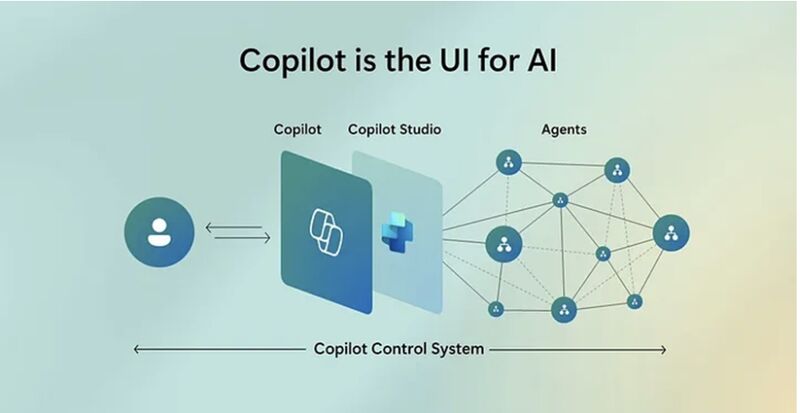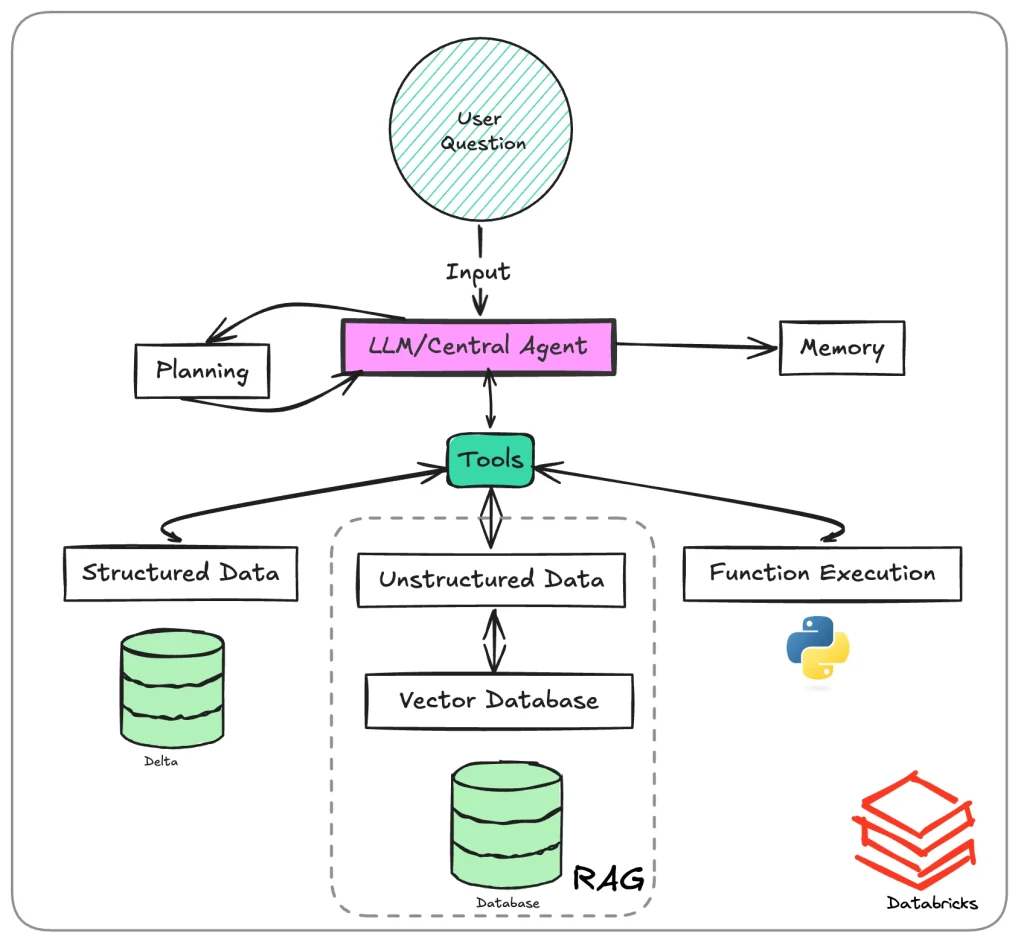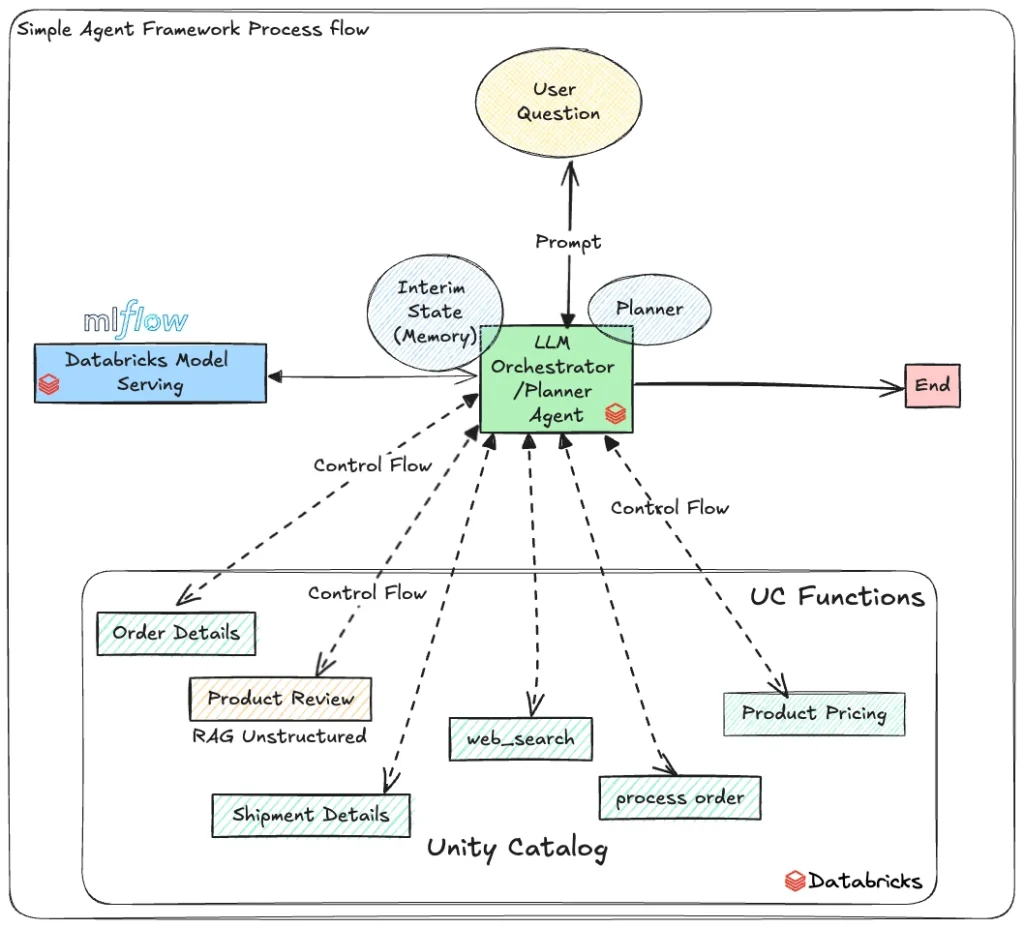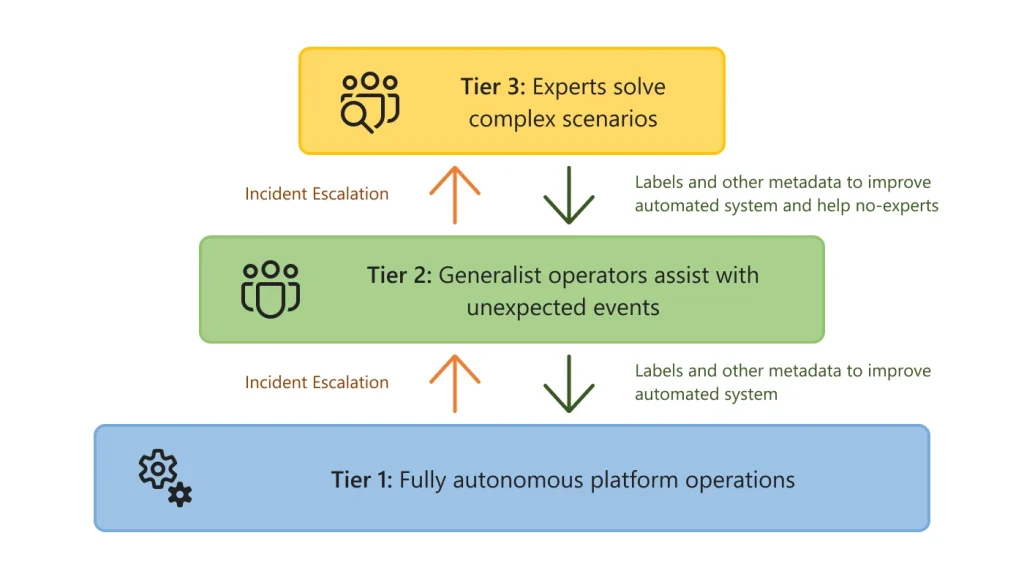👯 What Are AI Agents?
AI agents are intelligent systems designed to perform tasks and make decisions on your behalf.
They can assist individuals, teams, or organizations by handling anything from straightforward, prompt-and-response interactions to advanced, fully autonomous workflows.
Whether managing projects or reconciling financial data, these agents tackle complex, multi-step processes with precision and efficiency.
What Are AI-Powered Agents, and How Will They Transform the Workplace?
➡️ Quick Summary:
1️⃣ AI agent will change the game, automating tasks and freeing you to focus on high-value work.
2️⃣ They’re flexible and capable of handling tasks from project management to financial reconciliation.
3️⃣ No coding skills? No problem! Anyone can create and customize agents.
4️⃣ Microsoft ensures safety and security with human-in-the-loop approvals for added control.
Microsoft’s Satya Nadella Just Rocked the SaaS World – And It’s Giving Major “End of an Era” Vibes
Hold onto your spreadsheets, folks, because Microsoft CEO Satya Nadella just casually dropped a truth bomb that could rewrite the software playbook as we know it. On a recent podcast, Nadella didn’t just stir the pot—he upended the whole kitchen, suggesting that our beloved (or begrudgingly tolerated) SaaS applications might be headed for the museum of obsolete tech.
And the culprit behind this software apocalypse? AI agents.
The Big Reveal
Satya pointed out that most business apps are essentially just CRUD machines. No, that’s not an insult—it stands for Create, Read, Update, Delete. Slap some business logic on top, and voilà, you’ve got SaaS. But here’s the kicker: Nadella believes that this business logic is packing its bags and moving to the AI tier faster than you can say, “paradigm shift.”
Once AI takes the reins, what happens to all those SaaS backends? Spoiler alert: they will become as valuable as a floppy disk in 2025.
Bye-Bye, Clunky Apps?
Picture this: instead of slogging through siloed software that feels like it was designed by someone who hates joy, we’ll have AI agents that understand us. They’ll anticipate our needs, automate workflows, and—dare we dream—make life easier.
So, is AaaS (Agents as a Service) the new SaaS? Are intelligent agents about to kick traditional applications to the curb? Nadella thinks so.
Enter AaaS: Agents as a Service
Nadella’s vision suggests we’re moving toward a world where AI agents, not static software, handle business operations. These agents could replace traditional apps by being more flexible, intuitive, and efficient.
What This Means for Marketing
I don’t think SaaS will vanish overnight—old systems tend to stick around. But Satya’s prediction highlights how AI is transforming our relationship with technology. For marketing specifically, this shift could be game-changing.
Imagine a world where:
- Marketing Campaigns Run Themselves: AI agents know your audience, customize messages at scale, and adjust campaigns in real-time for better results.
- Customer Experiences Are Flawless. AI anticipates customers’ needs, solves problems before they arise, and automatically delivers personalized experiences.
- Data Becomes Easy: Instead of digging through reports, you talk to an AI that explains the insights and suggests strategies.
Challenges & Opportunities
As we shift from SaaS to AaaS, here’s what’s in store:
- The Challenge: Marketers must level up their skills and partner with AI instead of fearing it. (Sorry, Luddites, there’s no escape this time.)
- The Opportunity: AI early adopters will unlock a treasure trove of efficiency, personalization, and ROI—and they’ll probably look pretty cool doing it.
AI Models vs. AI Agents – What’s the Difference? 🤖💡
They’re not the same, and here’s a simple way to explain it:
🔹 AI Model (Like a Recipe Book 📖)
= It thinks but doesn’t act. It processes inputs and provides outputs.
📌 Example: Early ChatGPT, which could answer questions but couldn’t take action.
🔹 AI Agent (Like a Chef 👨🍳)
= It thinks and acts! It plans, decides, and executes tasks across different tools and apps.
📌 Example: Advanced AI assistants that book flights, browse websites, or automate workflows.
In short, AI models are the brains, while AI agents are the ones who get things done!
How is it possible to create a SaaS application without UI?

AI agents can work without a traditional SaaS UI because they rely on natural language processing (NLP), machine learning, and backend APIs to interact directly with users and systems. Here’s how it works:
1. Conversational Interfaces
AI agents can communicate with users using conversational interfaces like chatbots or voice assistants. Instead of navigating a graphical interface, users ask questions or give commands in natural language, and the AI agent processes the input to deliver results.
2. Automation and Integration
AI agents can integrate directly with other software and databases via APIs. They act as intermediaries, fetching or updating data, automating workflows, or making decisions based on predefined rules or learning patterns. This eliminates the need for a visual UI for many tasks.
3. Context-Aware Responses
Advanced AI agents understand user intent through context. They gather information from past interactions, real-time data, or external systems, enabling them to perform actions without requiring manual input through a traditional UI.
4. Proactive Actions
AI agents can proactively perform tasks without user intervention, such as sending alerts, generating reports, or solving problems. This proactive nature reduces the need for users to interact with a UI.
5. Device Independence
Since AI agents are platform-agnostic, they can operate through various channels—email, messaging apps, voice assistants, or even IoT devices—removing the dependency on SaaS UI for interaction.
By shifting the focus from visual interfaces to conversational or automated interactions, AI agents redefine how users engage with software, prioritizing convenience and efficiency.
Do backends disappear, or do they just become less relevant?

Backends don’t go away; they remain essential, but their role evolves, and their visibility to the end-user diminishes. Here’s how:
1. Backends Become Infrastructure for AI Agents
AI agents still need backends to process data, manage storage, and execute complex computations. However, these backends shift from being tightly coupled with user-facing UIs to serving as AI agents’ data sources or decision-making engines.
2. The Backend’s Role is Abstracted

AI agents abstract the backend complexity by directly interacting with it and presenting only the relevant results or actions to users. Thus, users no longer need to navigate backend-dependent workflows through a UI; they communicate their needs to the AI agent.
3. APIs Take Center Stage
In an AI-driven world, APIs become the backbone of the backend. AI agents rely on APIs to fetch data, trigger processes, and integrate with other systems, making the backend a crucial enabler rather than a direct interface for users.
4. Backend as a Service (BaaS)

As AI agents handle more logic and workflows, backends may transition to “backend as a service” models. In this model, modular, cloud-based backends provide standardized services that AI agents consume, reducing the need for custom-built systems.
5. Backends for AI Model Training and Deployment
AI agents require robust backends for training, deploying, and maintaining AI models. These backends handle the heavy lifting, such as data pipelines, model updates, and performance monitoring, ensuring the AI agent operates effectively.
What is the AI tier?

The “AI Tier” refers to a layer in a software architecture where artificial intelligence handles tasks, logic, and decision-making that traditionally occurred in other layers, like the backend or application logic. It’s essentially where AI models, algorithms, and agents operate to process data, understand user inputs, and generate intelligent responses or actions.
Think of it as:
- Decision-Making Layer: Instead of hardcoded business rules, the AI tier uses machine learning models or other AI techniques to make decisions dynamically.
- Automation Hub: The AI tier automates workflows, anticipates needs, and takes actions, reducing the need for manual intervention.
- Interface Between Users and Systems: It acts as a middleman, processing user inputs (text, voice, etc.) and delivering results without requiring users to interact with traditional UI/UX layers.
SaaS Isn’t Dead—But It’s Getting a Makeover
Let’s not kid ourselves: SaaS isn’t going to disappear overnight. But is it evolving at warp speed? Oh, absolutely. The takeaway here is simple: the future of marketing (and everything else) belongs to those who embrace the power of AI.
So, buckle up, folks. The bots are coming and bringing a whole new playbook with them. Don’t be the person still clinging to the floppy disk.
How can I help you?
As a UI/UX designer specializing in SaaS and AI integration, I help startups design intuitive, human-centric experiences for AI agents and seamlessly integrate them into existing SaaS applications.
By understanding your platform’s unique workflows and user goals, I craft AI interfaces that feel natural and enhance productivity.
From designing conversational interfaces for AI-driven chatbots to integrating predictive workflows, I ensure the AI agent complements your software without overwhelming users.
I also collaborate with development teams to implement these designs effectively, ensuring your AI integration aligns with your brand identity and delivers measurable value to your users.
